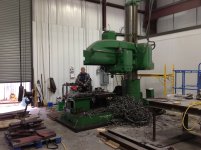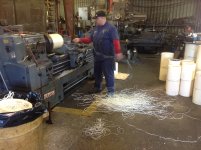If you have an American made South Bend lathe it WILL have a tang retention slot in the tailstock spindle.
.
I have a Heavy 10. I don't think it has a solid slot in the tailstock but I'll check tonite....
edited to add..... I have noticed that, like Chet's, my South Bend Heavy 10 has a solid quill, no cross-slot for a knockout wedge or drift so if it DOES have a retention slot I'm really curious how the taper-popping mechanism works!
Learning Every Day
Last edited:



